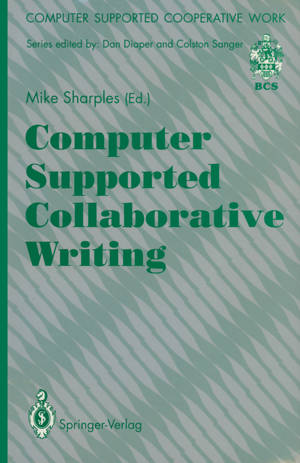
- Afhalen na 1 uur in een winkel met voorraad
- Gratis thuislevering in België vanaf € 30
- Ruim aanbod met 7 miljoen producten
- Afhalen na 1 uur in een winkel met voorraad
- Gratis thuislevering in België vanaf € 30
- Ruim aanbod met 7 miljoen producten
Zoeken
Computer Supported Collaborative Writing
€ 52,95
+ 105 punten
Omschrijving
M. Sharples 1. 1 The Collaborative Tradition Collaborative writing is nothing new. The description below is from the introduction to a book published in 1911: Every page, however, has been debated and passed by the three of us. Our usual method has been, first to pick up a subject that interested us, perhaps a subject we had been talking about for a long while, then to discuss it and argue over it, ashore and afloat, in company and by ourselves, till we came to our joint conclusion. Then on a rough day, in a set-to discussion, I would take down notes, which frequently amounted in length to more than half the finished article. From the notes I would make a rough draft, which, after more discussion, would be re- written, and again, after revision, typewritten. We would go through the printer's proofs together and finally, after reading the matter in print, we have once more revised it for book publication. Collaboration could not be more thorough. (Reynolds, et al. 1911, p. x) The book, Seems So! A Working-class View of Politics, was written by an aca- demic working closely with two fishermen.
Specificaties
Betrokkenen
- Uitgeverij:
Inhoud
- Aantal bladzijden:
- 222
- Taal:
- Engels
- Reeks:
Eigenschappen
- Productcode (EAN):
- 9783540197829
- Verschijningsdatum:
- 26/02/1993
- Uitvoering:
- Paperback
- Formaat:
- Trade paperback (VS)
- Afmetingen:
- 156 mm x 234 mm
- Gewicht:
- 340 g

Alleen bij Standaard Boekhandel
+ 105 punten op je klantenkaart van Standaard Boekhandel
Beoordelingen
We publiceren alleen reviews die voldoen aan de voorwaarden voor reviews. Bekijk onze voorwaarden voor reviews.










